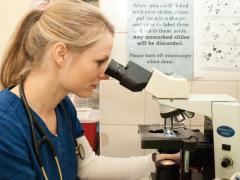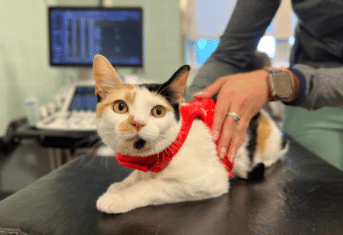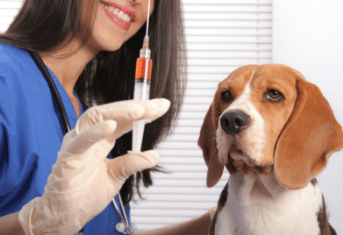Why I Love Pathologists

Why I Love Pathologists
Pathologists are the invisible specialists; at least they are invisible to pet families. Despite the fact that the American College of Veterinary Pathology is the oldest veterinary specialty college, I would be willing to bet you never got to meet the pathologist who read your pet’s biopsy. I would also bet you don’t even remember the pathologists name on the bottom of the biopsy report. But, pathologists are not invisible to me or to any of the veterinarians at the AMC – pathologists are critical members of your pet’s health care team.
Two Types of Pathologists
Pathologists come in two varieties: anatomic pathologists and clinical pathologists. Anatomic pathologists make diagnoses based on interpretation of biopsies or autopsies. Clinical pathologists are specialists in the interpretation of laboratory tests and a quick diagnostic test veterinarians use to determine the type of cell in a lump, a site of infection or in an abnormal internal organ. The test is called a fine needle aspiration cytology or cytology for short.
The Pathologist Says, ”Check the neck”
I saw a very cute Frenchie a couple of weeks ago. She had a confusing set of clinical signs: diarrhea, weight loss, and a very abnormal spleen. We collected a fine needle aspiration cytology of the spleen. The clinical pathologist interpreting the cells removed from the spleen reported they were tumor cells. She then went on to say, “Check the dog’s neck; these cells look like they came from a thyroid tumor.” After poking and prodding, we found a 1 inch tumor buried deep in the Frenchie’s thick neck. Without that guidance from the pathologist, I would never have found the neck tumor.
A Question About the Neck
About the same time I saw the cute Frenchie, I also saw a cat with a neck mass. The cat’s regular veterinarian obtained a biopsy from the neck mass. The sample was sent to an anatomic pathologist who interpreted the biopsy, reporting the mass was a tumor, possibly a hemangiosarcoma or a melanoma.
My job as an oncologist is to put all the diagnostic tests in context with the clinical signs of the pet patient and in this cat, the biopsy just didn’t match. Melanomas are very rare in cats and hemangiosarcoma was possible, but the mass was in just the right place for a thyroid carcinoma. I called the pathologist and we had a great conversation about the case. In the end, we decided he would do some special testing on the biopsy, which determined the tumor was a rare combination tumor called a carcinosarcoma of the thyroid gland. Once the pathologist determined the type of tumor, I could proceed with treatment recommendations for the cat.
These are just two of the many patients who have benefitted from the expertise of pathologists. These types of cases continue to fuel my dependence on pathologists to provide an accurate prognosis and help me provide the best care possible for each and every one of my patients.

































